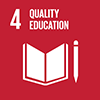Description/achievement of initiative
Abstract of the UNIL Strategic Plan 2012-2016Sustainability chapter :objective : Making sustainability one of the UNIL’s key concernsThe financial crisis and climate change have given rise to a profound questioning of our choices for society and our economic models. Article 73 of the Swiss Federal Constitution stipulates: « The Confederation and the cantons work to establish a lasting balance between nature, particularly its capacity for renewal, and its use by human beings ». Yet we know that our country consumes around twice as many natural resources as the biosphere is capable of producing. At this rate, our lifestyle can never be shared by the population of the planet as a whole, for want of natural resources; it therefore generates social inequalities. That is why, if we are to attain the balance envisaged in the Constitution, it is necessary to reduce our consumption. The Rectorate wishes to tackle these immense problems head on by equipping UNIL with an ambitious sustainability policy, set resolutely apart from the faux policy of so-called greenwashing.The aim therefore is to propose examples of new lifestyles that respect local and global limits and balances. The sustainability strategy, which takes shape through a participatory process, is called the UNIL's Agenda 21.Measures :1. Encourage teaching and research on themes of sustainability2. Strengthen the culture of sustainability in the UNIL community3. Affirm UNIL as a centre of reflection on sustainability4. Manage UNIL's consumption of natural resources and energy in a rational way5. Make sustainability a part of UNIL's quality cultureKey human resources : vice-rector for sustainability, sustainability officer, sustainability commission
Implementation methodologies
By the term sustainability UNIL means the need for society to maintain a degree of prosperity, while at the same time drastically reducing its impact on the biosphere by showing greater consideration for the limits of natural riches and the need to share resources more fairly. While the natural sciences and technology will play a role in creating innovative solutions, it is clear that they alone will not be able to meet this challenge. Institutional, economic and social innovations will also be necessary. It is the responsibility of educational and research institutions to analyse in depth the mechanisms that lead to current imbalances and to contribute to the emergence of such innovations.
Arrangements for Capacity-Building and Technology Transfer
Coordination mechanisms/governance structure
Partner(s)
University of Lausanne


 2015
2015
 Time-frame: 2012 - 2015
Time-frame: 2012 - 2015